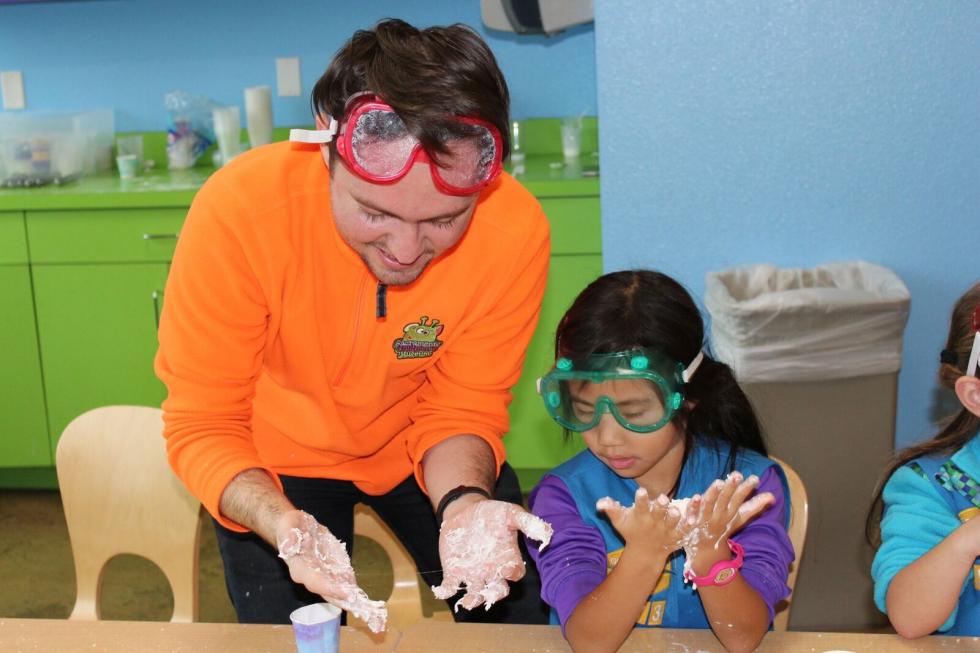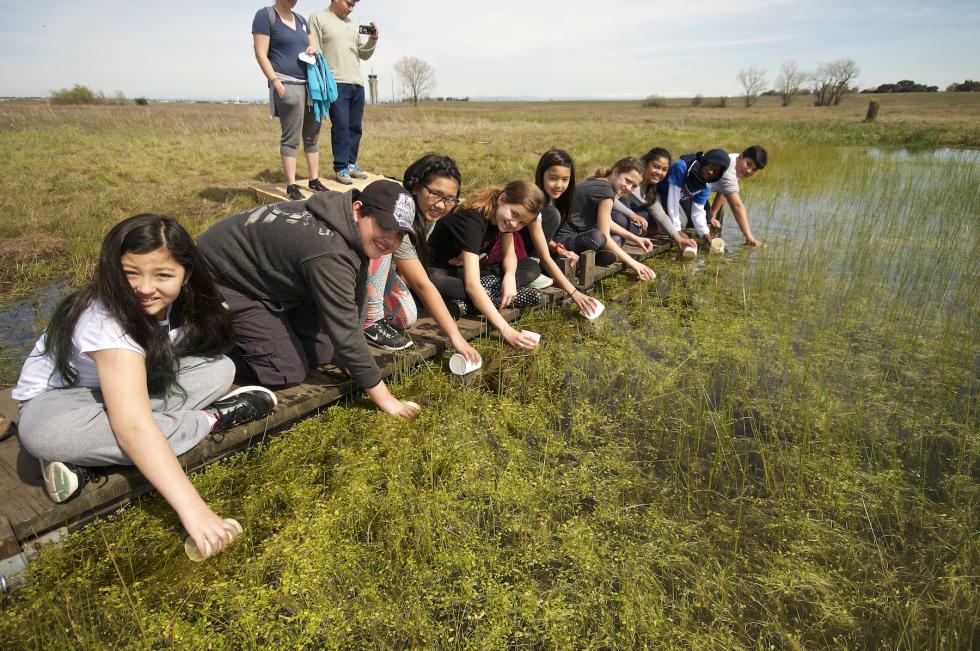A young girl was playing with the two lambs in the Mary’s Little Lambs exhibit at Fairytale Town in Sacramento one day, as Executive Director Kathy Fleming observed. The girl ran back and forth between the lamb and a grassy area, Fleming says, until the sheep started to “baaa.”
“She ran up to her parent and she goes, ‘I speak sheep!’” Fleming says. “She was just so proud of herself that she was able to get the sheep to talk to her.”
Play, in whatever form it takes takes — be it learning to speak sheep, jumping in puddles or dressing up as characters — is vital. Play is critical for a child’s physical, mental, social and emotional development, according to Dr. Olivia Kasirye, public health officer for Sacramento County. “Play is very important for children,” she says.
But as safety fears have led today’s parents to keep their kids indoors — with electronics and television — and as school recess has been on a steady decline, children may be having less opportunity to play. Same goes for kids whose parents have booked their schedules with activities, and don’t allow them time to simply have fun playing.
A child has fun learning at the Sacramento Children’s Museum.
(Photo courtesy Sacramento Children’s Museum

Just how much play children get can have ramifications throughout their life. For example, the problems that many students have in college, such as depression, hopelessness and even suicidal thoughts, could be linked to them not knowing how to cope with their busy schedules, according to Kasirye. “This, to me, indicates that there is some lack of balance in … the activities that we are giving to children, so that by the time they get to college they’re already showing signs of burnout,” Kasirye says.
In some ways, it’s a perfect anti-play storm: Not only is recess decreasing, but revocation of recess can sometimes be used as a disciplinary measure. “You can imagine if a child is already stressed out, he’s already having behavioral problems, and then they’re isolated from others and not allowed to have recess, it just accumulates the problems that they have emotionally,” Kasirye says.
Children living in the Sacramento region do have play opportunities, the first of which might require a little, well, magic to believe in.
Science and Fairies
Opened in 1959, Fairytale Town is a children’s storybook park and education center; play areas include King Arthur’s Castle, Sherwood Forest, the Old Women Who Lived in a Shoe’s giant boot and a pirate ship. “There aren’t many places like Fairytale Town in the world,” Fleming says of the unique park.
Fairytale Town also has an Adventure Playground at Maple Neighborhood Center in south Sacramento. With a focus on older kids, age 7-15, the venue lets kids experiment with actual tools. “It’s just real — kind of noisy, messy, dirty play that parents, understandably, don’t really want to have done in their own home, but the kids just love to do,” Fleming says.
By giving children a place like Fairytale Town, where they can experiment and play, they are able to put their imagination to work. “I think maybe that’s where we fit in, is in the inspiration aspect of play,” Fleming says. “Kids come here and they kind of intuitively know what to do, so I think it does inspire that sense of wonder, that sense of play and that sense of exploration.”
Fairytale Town isn’t the only place in Sacramento looking to boost children’s play options. The Sacramento Children’s Museum opened in 2011, after a six-year effort by local parents to bring such a space to the area.
Sacramento Splash teaches fourth and fifth graders about vernal
pools. (Photo courtesy David Rosen/Wildside Photography)

“One of the things that makes children’s museums a little bit different than say science or discovery museums, is imagination play, and role-playing is really important for us and for young kids,” says Executive Director Sharon Stone Smith.
The museum, geared toward newborns to children 8 years old, recently added a play veterinary office, in addition to its other offerings where kids can do everything from grocery shop to see what it’s like to be a postal worker. All the appropriate flourishes are there, including dress-up hats and costumes. “[Play] really does help promote creativity and originality,” Smith says.
Splashin’ Around
Stories and museums are two ways that children in the Capitol Region can play, but they can also do something else: Head outside. The nonprofit organization Sacramento Splash is currently working with about 100 fourth and fifth grade classes, teaching students about vernal pools through both in-class instruction, and of course, an actual trip out to the pools themselves.
“When you’ve gone and you’ve gotten to actually go play in the vernal pools and catch the tadpoles and seen how they grow into frogs … it’s that element of play that brings the education to life,” Executive Director Emily Butler says.
While classroom instruction and play may seem like odd bedfellows — with learning and play separated by the bell that rings between class and recess — Butler rejects this idea. “From the education perspective, I think there has been this tendency to believe that education and play are separate, and I don’t think that’s true,” she says. “I actually think that for children, certainly up and to a certain age, but probably beyond, I think that for all humans beings play is a fundamental way in which we learn.”
At the end of the day, Splash offers kids an opportunity to do just that: have fun while learning.
“I really see that when those kids get out there and they get to dip their cups in the water and catch polliwogs, and find snakes in the grass and find the vole holes and the gopher holes and all that stuff, it just taps into a very fundamental part of being human that you can’t really get any other way,” Butler says. “There’s no replacement.”



